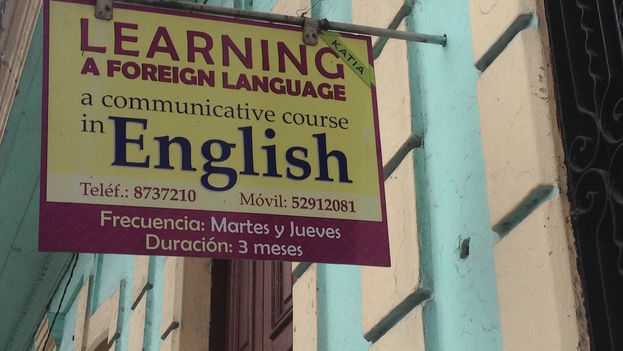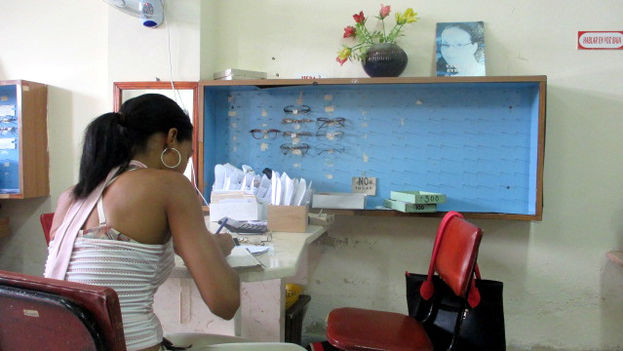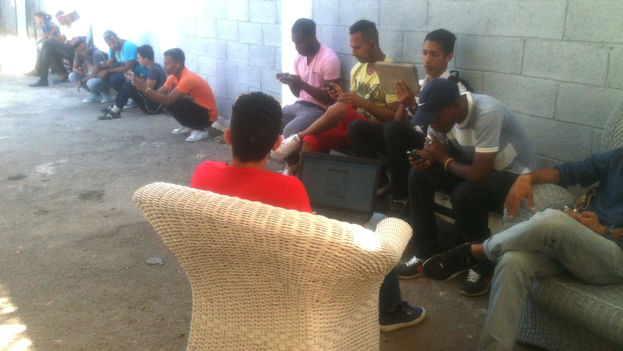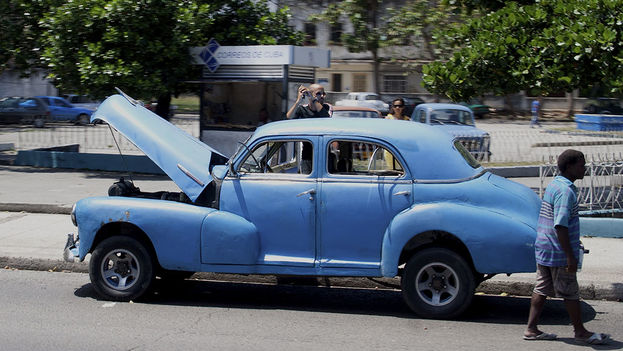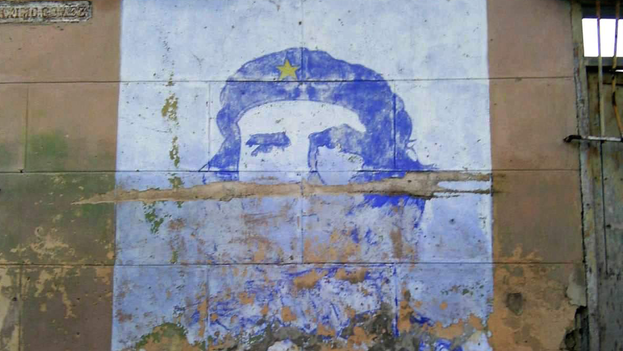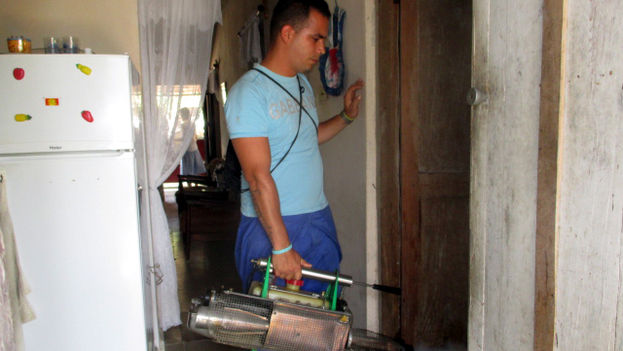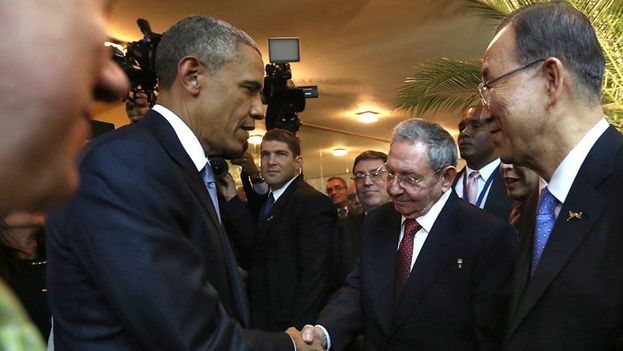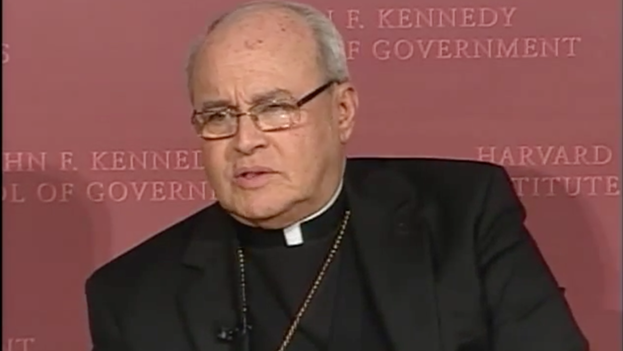Of course the intention is to say that nothing has changed and continue raising the smoke screen of the blockade of the “enemy’s” plans to continue to try to hide the true causes of the economic disaster and justify the lack of democracy and the repression of difference.
It is elementary that the United States would like a free market economy regime, with a government that helps it to preserve its interests on the Island and in the region. But to accomplish this it can’t subvert the Cuban government.
However, from there to trying to impose a government of its will, in the new international conditions, goes a long way, because they know full well that a deliberate attempt in this sense would be met with great resistance in the country and the region. Besides, why fall into dangerous adventures, if via other “intelligent” ways you can get the same results? continue reading
No. Today the objective of the United States is not to “destroy the Revolution.” The “revolutionaries” in power have been changed with this, as Fidel Castro himself said on 5 November 02005 at the University of Havana. He and his group prevented, first, the triumph of the democratic revolution in 1959-1960 and later, in the name of the Revolution, Socialism and the working class have avoided the Socialist transformations.
In Cuba we’ve had neither a democratic revolution nor a socialist revolution.
In Cuba we’ve had neither a democratic revolution nor a socialist revolution.
The United States watched the transition of the centralized “socialist” economies in the Soviet Union, Eastern Europe, China and Vietnam, to more or less free markets, in the hands of many of their own former leaders. Boris Yeltsin, former member of the Politburo of the USSR Communist Party, or Deng Xiaoping, also a member of the Politburo of the Communist Party in China, and others of a similar style.
With this disaster it became clear that “State Socialism” never ends, because its inconsistencies between socialist ends and capitalist measures (working for wages and the centralization of property), sooner or later, move the economy in a natural way toward private capitalism.
This is the result of not having socialized the economy nor democratized political power, i.e. delivered real power – economic and governance – to the workers and the people.
Previously, the objectives pursued by the United States in Cuba were to avoid the consolidation of a “socialist” regime, its eventual reversal and to avoid its spread in the region. But with the fall of international support the Castro regime fell into crisis, ending the export of the Revolution and no one on the continent is excited about following the Cuban model.
With these goals, without any invasion, and demonstrating the endogenous unviability of the Cuban State socialist model (neither socialist nor Cuban), the United States believed that its implosion would be the matter of a short time. It didn’t understand until today that, despite its inconsistencies and economic deficits, the “confrontation with imperialism,” the support from Venezuela, the hyper-exploitation of those who work for the State, the permanence of the historic leader and some populist measures brought certain reserves of time to the “Castro experiment.”
With the fall of international support the “Castro experiment” fell into crisis, ending the export of the Revolution and no one on the continent is excited about following the Cuban model
In parallel, starting from 1994, concern was growing among the American “establishment” over the complicated internal crisis that was generating another rafter migration crisis, converting Cuba into a failed state, and leading the United States to have to engage in some kind of intervention. This definitely put US strategic interests in the region at risk.
This was no longer defined by the Intelligence Community, as expressed by different representatives, when the transmission of power in Cuba from Fidel Castro to his brother became clear. They then specified that a government in military hands, like those of Raul Castro, suited their purposes of realizing a peaceful economic and political transition in Cuba.
It was at that time that the United States began to understand the political futility of the blockade-embargo and to delineate a new policy. Obama was not yet president.
Once power was transmitted to Raul, and with a different administration in Washington, a new intention became clearer: to help the General’s Government ease the internal economic situation to avoid this dangerous crisis and, of course, to take advantage of the opportunities offered by the “opening” for foreign capital and the established of all the ties and commitments permissible to be as close as possible to the Cuban government
And this is what, in the first instance, explains the policy change that had antecedents even in the Bush administration, when food imports were allowed and talks were held on commitments about migratory problems.
The policy change had a history even in the Bush administration, when food imports are allowed and talks on migration issues and commitments were made
Another key element in this new projection is that the unnecessary extension of the absurd blockade-embargo became a boomerang for US foreign policy, particularly in Latin America. Mending its relations with Cuba would seem to be a precondition to reverse this situation and create a more favorable environment for the expansion of political and economic relations in the region in the face of the Chinese and Russian offensive.
We must not forget that the Free Trade Area of the Americas (FTAA), with which the United States tried to create an economic zone on the continent to try to preserve the extra-continental competition, was sabotaged by the initiative of Fidel Castro with the support of Hugo Chavez.
With “normalization,” the United States aims to neutralize the extreme anti-imperialism of the “historic leadership,” which has brought it so many problems around the world.
Part of the new policy is the continuation of the Cuban Adjustment Act, a permanent escape valve for the dissatisfied, now with more opportunities to skip the country with the new migratory law; clearly there is a need to get the growing discontent — generated by the “update” itself — off the Island.
A sign of discontent? An old man in the neighborhood, 80 years old, loyal to Fidel, and upset because the ration book offers almost nothing, and his pension doesn’t stretch far enough, told me, “If Fidel knew that Raul took the food away from the people, he would have him shot. End of story.”
Certainly, a major relief would be political changes that ease the internal tensions. But the United States knows that this part is the responsibility of Cubans.
With the “normalization” US aims to neutralize the extreme anti-imperialism of the “historical leadership” which has brought it so many problems around the world
To the Stalinist extreme, deep in the structures of the Communist Party and for the purposes of its intransigent anti-imperialist image, it is not convenient to accept that the strategic objective of the United States in Cuba is the stability to avoid a crisis, nor that supporting Raul Castro’s government is a part of the tactic to accomplish that.
Such an approach would undermine the “confrontation with imperialism,” the Party’s propaganda and the philosophy of the “citadel under siege” that tries to justify the internal repression of the dissidence and those who think differently, as well as the democratic deficit of the “model” (a model of what should not be done in the name of socialism).
The real purpose of the “update” is no longer to build “socialism,” but to go from the monopolistic capitalism of the State to the restoration of private capitalism, but under the control of the senior bureaucracy in alliance with big foreign capital.
![]() EFE (via 14ymedio), 19 June 2015 – The dissident group Cuban Commission for Human Rights and National Reconciliation (CCDHRN) estimates that there are at least 71 people imprisoned on the Island for “political reasons or through politically directed procedures,” almost half the number documented a year ago.
EFE (via 14ymedio), 19 June 2015 – The dissident group Cuban Commission for Human Rights and National Reconciliation (CCDHRN) estimates that there are at least 71 people imprisoned on the Island for “political reasons or through politically directed procedures,” almost half the number documented a year ago.

